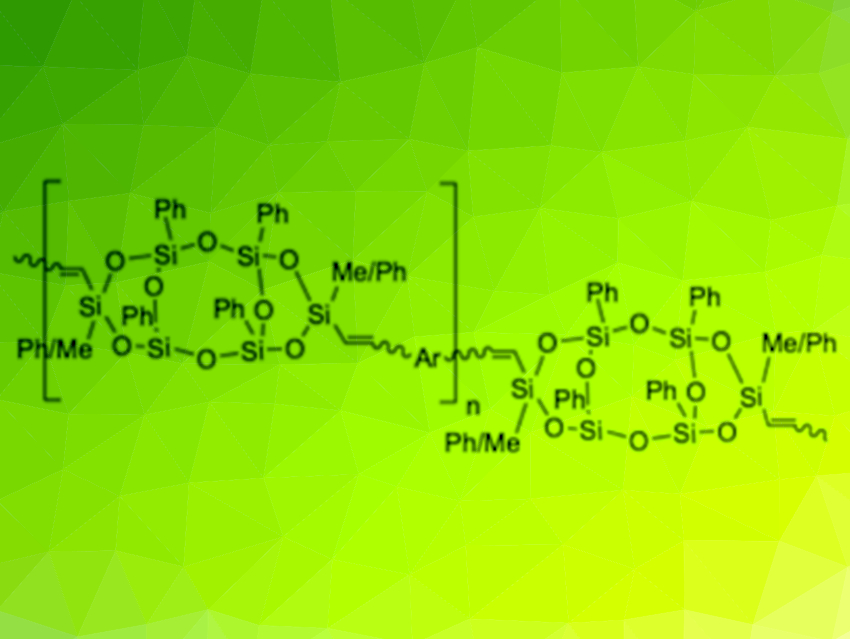Most polymers are electrical insulators, but conjugated polymers—used, for example, in OLED TVs—can transmit charges along their monomer chains. Silicones, or polysiloxanes, are water-repellent, flexible, and highly insulating polymers. Three-dimensional siloxane cages (silsesquioxanes, SQs), in contrast, offer more rigid and robust mechanical properties. These molecular “sand analogs” can show excited-state conjugation instead of the expected insulating behavior.
Constructing SQ chains linked via conjugated monomers can provide extended conjugation along the chains. So-called “double-decker” (DD) SQ-based polymers (pictured below), for example, unexpectedly show conjugation that appears to involve two vinyl(Me)Si(O‐)2 bridges.

Richard M. Laine, University of Michigan, Ann Arbor, USA, and colleagues have replaced the DD units in these polymers with half cages, leading to so-called ladder (LL) SQs (pictured above). The polymers were synthesized via Heck cross‐coupling reactions of vinyl‐LL‐vinyl units with various dibromo‐aromatic compounds. The team assumed that without a cage, no conjugation would occur. Surprisingly, the LL-type polymers exhibited even more extended conjugation. According to the researchers, modeling and previous examples do not provide a basis for understanding this behavior yet. The LL systems could lead to new families of conjugated, conducting polymers with potential applications in displays, photovoltaics, or sensors.
- Conjugated Copolymers That Shouldn’t Be,
Richard M. Laine, Jun Guan, Zejun Sun, Ramin Ansari, Aimi Endo, Masafumi Unno, Yujia Liu, Armelle Ouali, Shahrea Mahbub, Joesph C. Furgal, Nuttapon Yodsin, Siriporn Junstuttiwong, Daniel Hashemi, John Kieffer, Joseph C. Furgal, Siriporn Jungsuttiwong,
Angew. Chem. Int. Ed. 2021.
https://doi.org/10.1002/anie.202014932

![Synthesis of [c2]Daisy Chains via Mechanochemistry](https://www.chemistryviews.org/wp-content/uploads/2025/04/202504_RotaxanesWithSolidStateMechanochemistry-125x94.png)

